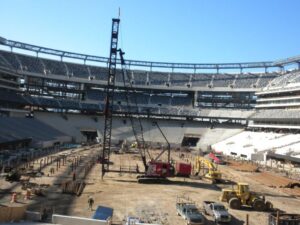
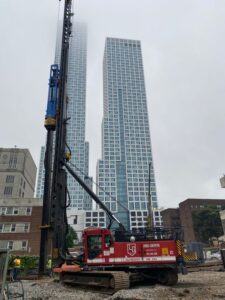
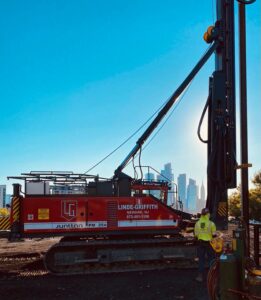
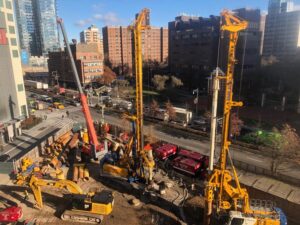
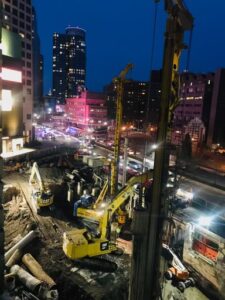
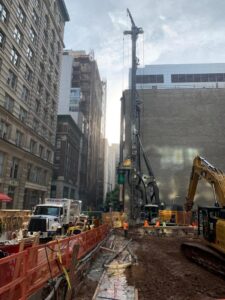

Driven piles are a deep foundation element that is used to transfer the load of a structure down to a deeper soil or rock layer that is capable of supporting the load. They are installed by driving a pile, which can be made of wood, concrete, steel, or other materials, into the ground using an impact or vibration hammer. As the pile is driven into the ground, it displaces the soil or rock and eventually reaches a layer of hard soil or rock that is able to support the load of the structure.
Driven piles are suitable for a wide range of soil and rock conditions and can be used to support a variety of structures. They are also resistant to compressive, uplift, and lateral loads, which makes them well-suited for use in many regions. Additionally, driven piles are not affected by ground water, which makes them a good choice for use in areas with high water tables or other groundwater conditions.
Micropiles are a type of deep foundation element that are used to transfer the load of a structure down to a deeper soil or rock layer that is capable of supporting the load. They are typically constructed using high-strength, small-diameter steel casing and threaded bar, and are used to provide structural support, underpin foundations, and transfer loads.
Linde-Griffith’s drill rigs are suitable for installation in low headroom interiors and on sensitive grounds with adjacent structures. Linde-Griffith often combines Micropile technology with one or more ground modification techniques to meet specific project requirements.
Caissons are a deep foundation element used to transfer the load of a structure down to a deeper soil or rock layer that is more capable of supporting the load.
Caissons are often used in situations where it is not possible to excavate a large pit for a caisson foundation, such as when there are existing structures in close proximity.
Caissons offer high load-bearing capacity and can be used in a wide range of soil and rock conditions. They are also relatively resistant to vibration, which is important in seismically active areas or for structures that are sensitive to vibration.
Full displacement piles are deep foundation elements that are used to transfer the load of a structure down to a deeper soil or rock layer that is capable of supporting the load. These piles are designed to fully displace the soil or rock that is removed during the installation process, which means that the pile takes the place of the soil or rock that was previously in place. This can be beneficial in situations where it is not practical or desirable to remove the soil or rock from the site, or where the soil or rock contains contaminants that would be harmful if released into the environment. Full displacement piles are typically used in fixed soil conditions, where the soil or rock is relatively stable and not prone to movement.
Auger cast piles, also known as continuous flight auger piles (CFA), are a type of deep foundation element that is used to transfer the load of a structure down to a deeper soil or rock layer that is capable of supporting the load. They are constructed by boring a hole into the ground using an auger and simultaneously filling the hole with concrete as it is advanced to the desired depth. Auger cast piles offer fast installation and can be used to provide earth retention, prevent landslides, and provide structural support. They are often combined with ground anchors or soil nails to provide additional stability and support. Auger cast piles are suitable for use in a wide range of soil and rock conditions and are particularly well-suited for use in areas with soft or unstable soil or rock.
Helical piles are a type of deep foundation that is used to support structures when the soil is not strong enough to support the weight of the structure. Helical Piles consist of a steel shaft with helical flights, or “helixes,” attached to the shaft which allow the pile to be screwed into the ground. Helical piles can be used in a variety of soil types, including sand, clay, and rock, and they are particularly useful in areas where the soil is too soft or unstable to support traditional foundations, such as on slopes or near bodies of water.